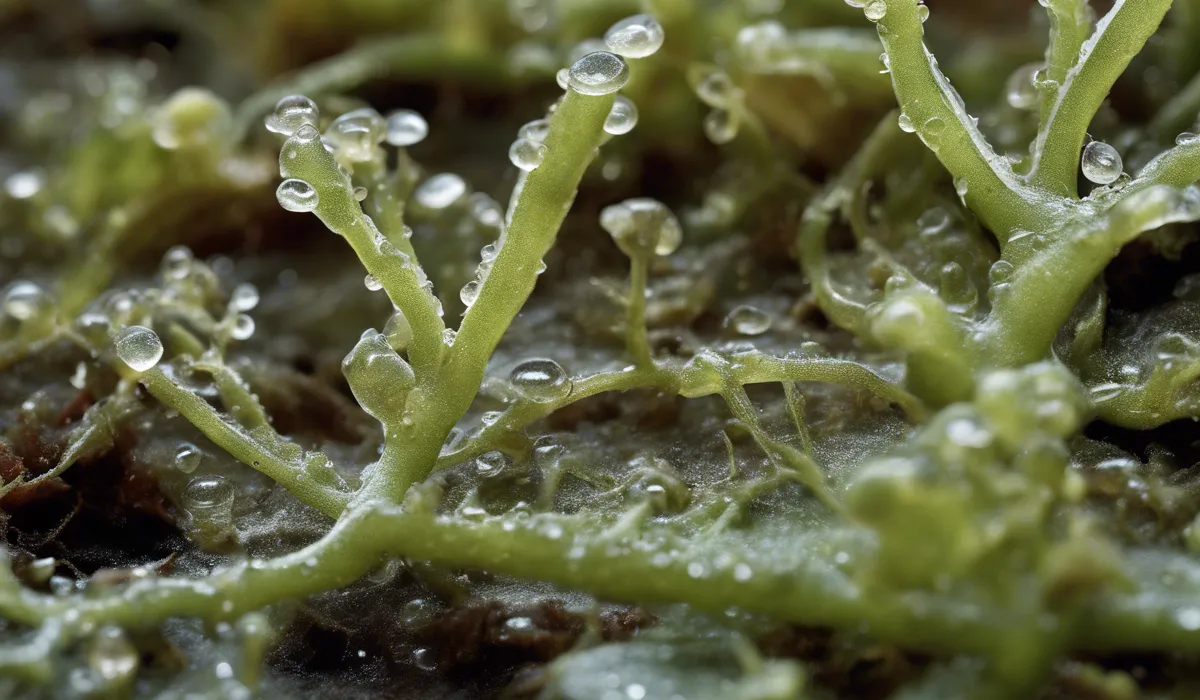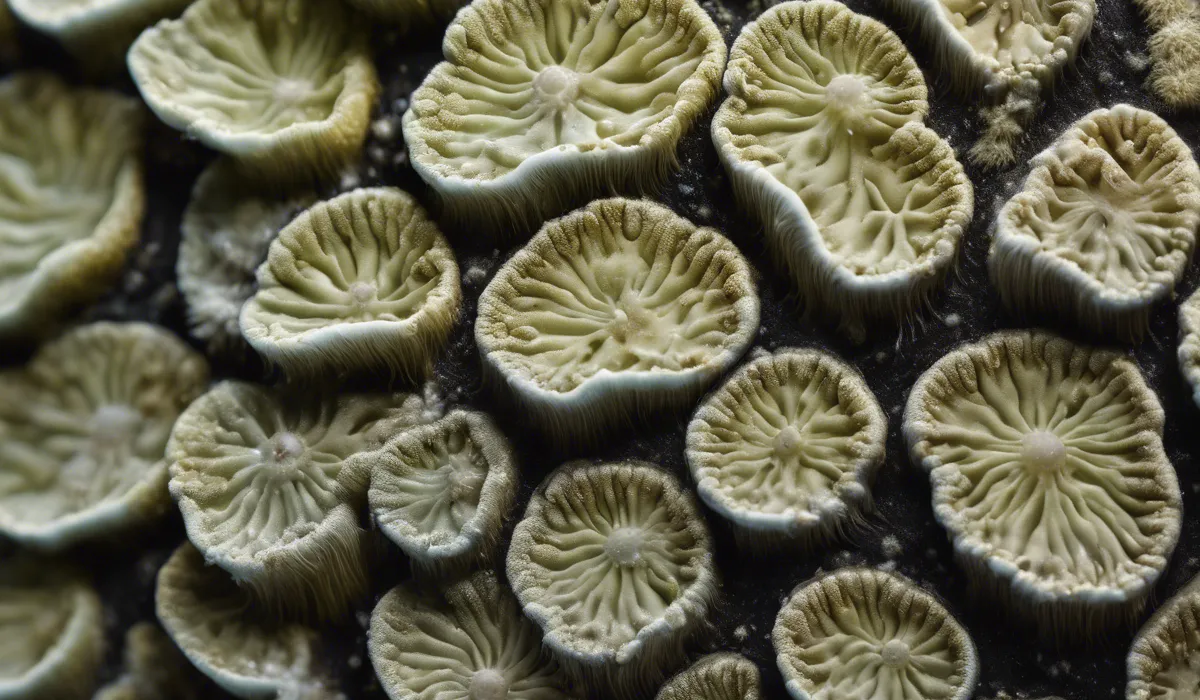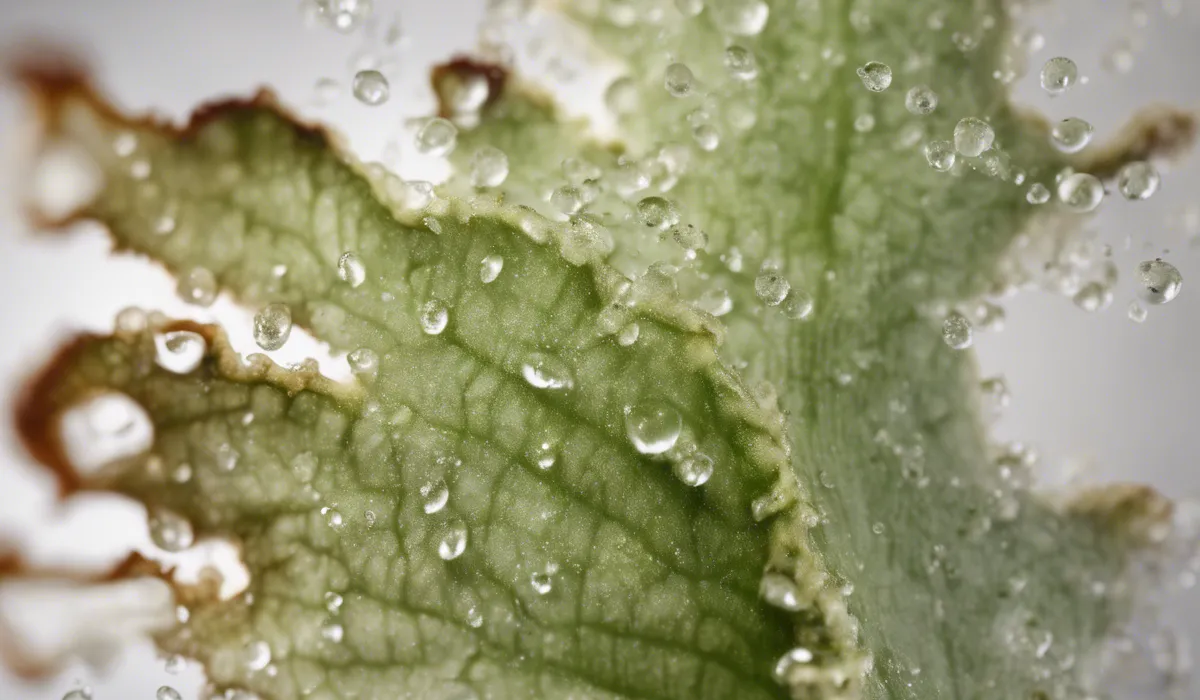Yes, mildew is a type of fungus. It forms a flat growth on organic materials, especially in damp conditions. Mildew is commonly found on plants, paper, leather, and fabrics, often causing a musty odor and discoloration.
Mildew Characteristics and Classification

Definition of Mildew
Mildew is a type of fungus that thrives in moist environments. It appears as a patch of white or gray fungus lying flat against a surface.
Unlike plants that require sunlight to grow, mildew only needs dampness and organic material to develop. It is often found in homes and other buildings, causing a musty smell and unsightly spots on walls, ceilings, and other surfaces.
Differentiating Mildew from Molds and Other Fungi
While mildew is a fungus, it differs from molds in appearance and texture. Molds are typically fuzzy or slimy and can be various colors, whereas mildew is powdery or downy.
Other fungi, like mushrooms, have complex structures and are not typically considered pests in homes. Understanding these differences helps in correctly identifying and treating mildew.
Classification and Types of Mildew
Mildew is classified under two main types: downy and powdery. Downy mildew affects a wide range of plants, often causing harm to agriculture.
Powdery mildew usually appears on the surface of leaves, stems, and flowers. Both types play distinct roles in the environment but require management to prevent damage to plants and materials.
The Biology of Mildew
Mildew reproduces through spores, which can spread through the air or by water. These spores land on damp surfaces and begin to grow, feeding on the organic material present.
Mildew thrives in warm, damp conditions, making bathrooms, kitchens, and basements common places for its growth.
Common Places Where Mildew is Found
Typical areas where mildew can be found include damp clothing, shower curtains, window sills, and plant leaves.
It prefers places with minimal airflow and high humidity. Regular cleaning and ventilation are vital in preventing mildew buildup in these common areas.
Exploring the Scientific Perspective

Scientific Classification of Fungi
Fungi are a kingdom of organisms separate from plants, animals, and bacteria. They play essential roles in ecosystems, such as decomposing organic matter.
Mildew, as a fungus, fits within this classification and shares many characteristics with its fungal relatives.
The Role of Mildew within the Fungal Kingdom
Mildew has a specific role in the fungal kingdom. It breaks down dead organic material, which recycles nutrients back into the ecosystem.
However, it can also be problematic when it grows on living plants or in homes.
Comparison with Other Fungi
Mildew shares many traits with other fungi, such as reproducing through spores and lacking chlorophyll.
However, it is unique in its preference for flat surfaces and the specific materials it tends to colonize, like damp fabrics and plant matter.
Mildew’s Ecological Impact and Relationship with Its Environment
Mildew impacts the environment by breaking down organic materials, which can be beneficial.
However, its growth on crops can lead to reduced yields and economic losses. It is a part of a complex web of organisms and affects its surroundings in various ways.
Implications of Mildew in Daily Life

Health Effects of Mildew Exposure
Exposure to mildew can cause health issues, particularly for individuals with allergies or asthma.
It can trigger respiratory problems, coughing, and headaches. It is crucial to keep indoor environments clean and dry to minimize health risks associated with mildew.
Mildew and Its Impact on Agriculture and Ecosystems
In agriculture, mildew can devastate crops, leading to significant losses. It can also disrupt natural ecosystems by affecting plant health and the balance of species.
Effective management strategies are essential to protect both cultivated and wild plants.
Methods for Controlling and Preventing Mildew Growth
Preventing mildew involves controlling moisture levels, improving ventilation, and cleaning regularly.
For plants, fungicides may be used to treat or prevent mildew infections. In buildings, dehumidifiers and fans can help maintain a dry environment.
Importance of Managing Mildew in Homes and Commercial Settings
Managing mildew is crucial for maintaining the structural integrity of buildings and the health of occupants.
In commercial settings, it can affect products and create unhealthy work environments. Regular inspections and maintenance are key to preventing mildew problems.
FAQs About Mildew as a Fungus
What is mildew and is it a type of fungus?
Yes, mildew is a type of fungus that appears as a flat growth on various organic materials in damp conditions.
Can mildew grow on plants as well as non-living materials?
Mildew commonly grows on plants, paper, leather, and fabrics, affecting both living and non-living materials.
Does mildew cause any distinct odors or changes to materials?
Mildew often causes a musty odor and can lead to discoloration of the materials it grows on.
Is the presence of mildew exclusive to specific conditions?
Mildew thrives in damp conditions, which are essential for its growth and proliferation.
How can one identify mildew on materials?
Mildew can typically be identified by its flat growth pattern, musty smell, and the discoloration it causes on the affected materials.
Final Thoughts
Mildew is indeed a fungal entity that prefers damp, organic materials for growth. This flat, patchy type of fungus tends to invade plants, paper, leather, and textiles, often leaving behind an unpleasant musty smell and visible stains.
Its presence is indicative of excess moisture and can be a commonplace issue in various environments.
